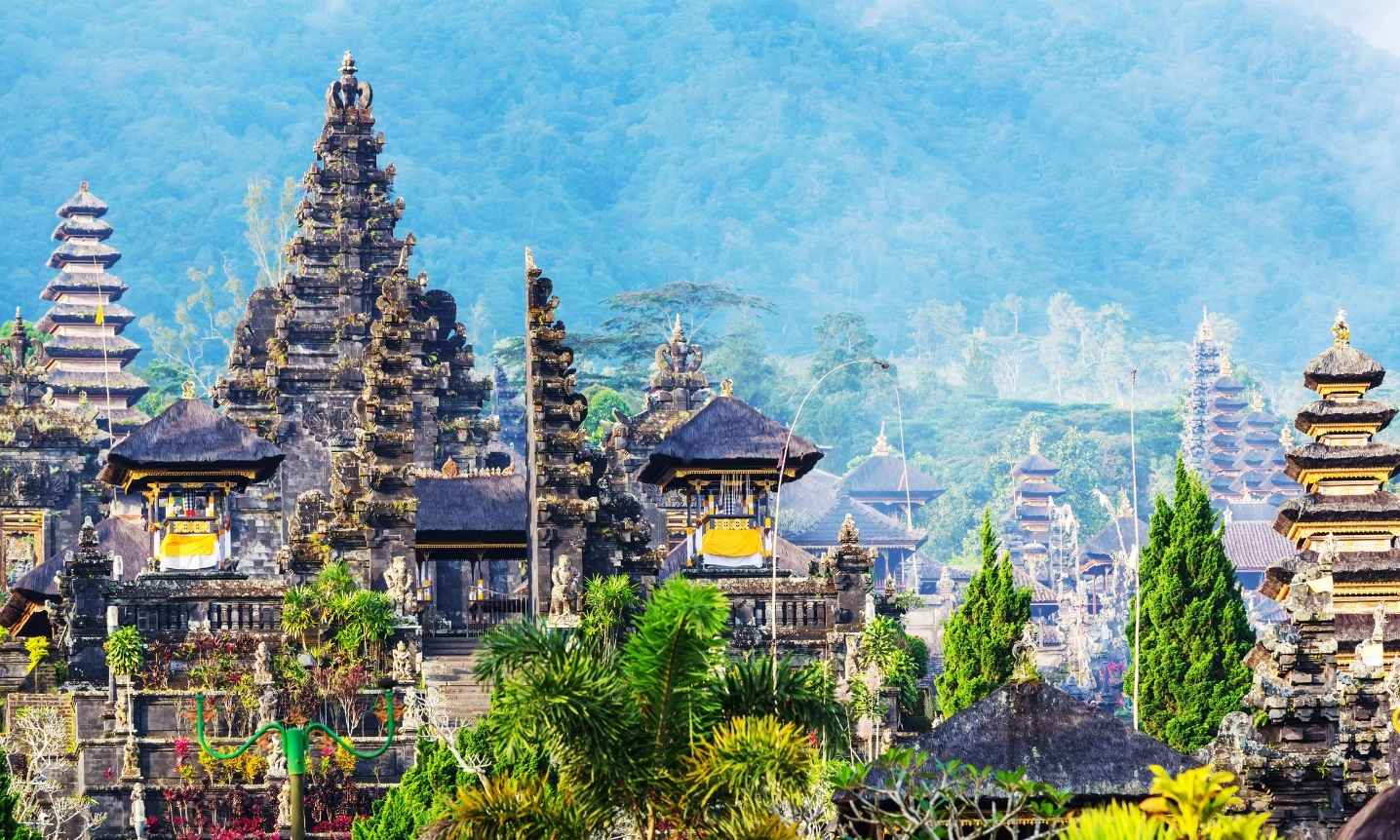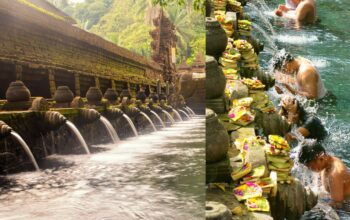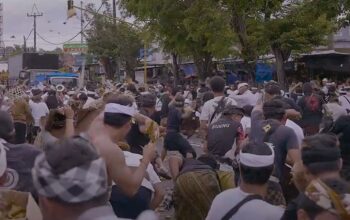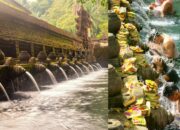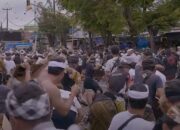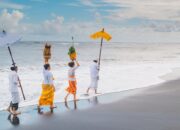Frequently Asked Questions
Where exactly is Pura Besakih located?
If you want to visit Pura Besakih, it’s located in Besakih Village, Rendang District, Karangasem Regency, East Bali. Its location is perfectly situated on the slopes of Mount Agung, Bali’s highest mountain, which is considered sacred by the local community. From Denpasar, it takes about 1.5 to 2 hours by car or motorbike.
Why is Pura Besakih known as the largest temple in Bali?
Pura Besakih is famous as the largest temple because of its vast complex, consisting of dozens of smaller temples within it. There isn’t just one main temple, but about 18 accompanying temples that make this place so large. So don’t be surprised if when you walk around there, the complex area is quite extensive and can be tiring if you’re not prepared. That’s why Pura Besakih is widely known as the “Mother Temple” or the spiritual center for Hindus throughout Bali.
What makes Pura Besakih special compared to other temples in Bali?
What makes Pura Besakih very special compared to other temples is its status as the main temple, or “Mother Temple” in Bali. This is the center of all temples on the island. Besides its enormous size, this place is also often the location for large ceremonies involving thousands of Hindus from various villages in Bali. In addition, its location right at the foot of Mount Agung creates a sacred atmosphere that is different from other places. If you come here, you are guaranteed to feel a unique spiritual energy and aura!
History and Culture Questions
History of Pura Besakih’s construction?
If we talk about the history of Pura Besakih, this temple has actually stood since ancient times, long before the existence of large kingdoms in Bali. It is said that this temple began to develop around the 8th century AD. From then until now, this temple has continuously undergone improvements and expansions, especially when Bali was under the rule of various kingdoms that once existed there.
Who first built Pura Besakih and when was it built?
Balinese folklore says that the first person to build this temple was a spiritual figure named Rsi Markandeya. Reportedly, around the 8th century, he traveled from Java Island to Bali and established a simple place of worship on the slopes of Mount Agung. Well, that simple place of worship eventually developed and became the precursor to the Pura Besakih complex we know today.
Philosophical meaning behind the design or layout of this temple complex.
If you walk around the Pura Besakih complex, you will definitely realize that its layout is very unique. This temple complex is built following the concept of Tri Mandala, which divides the temple area into three zones. There is the outer part (Nista Mandala), the middle part (Madya Mandala), and the inner part (Utama Mandala). This concept symbolizes the levels of life from worldly matters to spiritual ones. In essence, the layout is not arbitrary, but full of philosophy that describes the relationship between humans and God, humans with each other, and humans with their surrounding nature.
The role of Pura Besakih in the spiritual life of the Hindu community in Bali.
For Hindus in Bali, Pura Besakih plays a very important role in daily spiritual life. Not just an ordinary temple, this place is considered the center of spiritual and religious activities. Many large ceremonies, ranging from annual ceremonies to special ceremonies such as Eka Dasa Rudra which takes place once every hundred years, are held here. So, it’s not surprising that Pura Besakih is always crowded with devotees who want to pray, seek blessings, or find inner peace. In short, this temple is indeed the spiritual heart for the Hindu community in Bali.
Pura Besakih Architecture
What are the architectural characteristics of Pura Besakih?
If you pay attention to the architecture of Pura Besakih, you will see a very strong Balinese style. The temple buildings here are identifiable by their tiered meru roofs; the higher the tier, the more sacred the temple. You will also find intricate and detailed carvings on the gates (candi bentar and kori agung), which are full of spiritual symbols. In addition, the main building materials used are andesite stone and wood, which give a natural and sacred impression, perfectly suited to its location on the slopes of Mount Agung.
Smaller temples within the Pura Besakih complex.
The Pura Besakih complex is not just one temple. Within its complex, there are about 18 to 20 smaller temples spread across various areas. Each temple has its own name, with different specific functions. Because there are quite a few, you will need a considerable amount of time if you want to visit all parts of this complex.
Function of each temple within the Pura Besakih complex?
Each temple in the Pura Besakih complex has a specific function. Some are used to worship Shiva, Vishnu, or Brahma. For example, Pura Penataran Agung is the main temple for the worship of Tri Murti (the three main gods). There are also temples specifically used for family or ancestral ceremonies, such as Pura Pedharman, which is designated for certain family groups. So, although they may seem similar at first glance, each temple plays an important role in various aspects of Balinese spiritual life.
Tourist Visit Questions
What should tourists prepare before visiting Pura Besakih?
If you want to travel to Pura Besakih, there are a few things you must prepare to make your vacation more comfortable. First, make sure you are in prime physical condition because the temple complex is quite large and there are many stairs to climb. Also bring drinking water to avoid dehydration while walking around. Don’t forget to prepare a camera to capture beautiful moments, but remember to be respectful when taking photos, as this place is very sacred to locals. Finally, prepare appropriate or polite clothing, as this is a place of worship.
Are there specific rules for dressing or behaving when visiting Pura Besakih?
When you visit Pura Besakih, make sure you wear modest clothing, at least a top that covers your shoulders and long bottoms such as a sarong. If you don’t have one, sarongs and sashes are usually available for rent at the front of the temple. In addition, maintain a polite attitude and respect people who are praying. Do not arbitrarily photograph people who are worshipping without permission, and always ensure cleanliness within the temple complex.
Pura Besakih Ticket Prices
To enter the Pura Besakih area, there is usually an entrance fee that is quite affordable. The entrance fee for domestic tourists is around Rp30,000 per person, while foreign tourists are usually around Rp60,000 per person. But remember, these prices can change depending on the tourist season or local policies, so it’s a good idea to check the latest prices before visiting. Besides the entrance ticket, if you want to use the services of a local guide, there is usually an additional fee, but it’s guaranteed to make your trip more complete because you can learn many interesting stories from them!
Conclusion
Pura Besakih is the most important and largest temple in Bali, located on the slopes of Mount Agung, specifically in Besakih Village, Karangasem. Its vast complex consists of many small temples, making it a spiritual center for the Hindu community in Bali. Its history began in the 8th century by Rsi Markandeya, who established a simple temple that later developed into the magnificent temple it is today. Its design is unique with the Tri Mandala concept, symbolizing the spiritual journey of humans. In terms of architecture, this temple is very distinctive with its tiered meru roofs, detailed carvings, and the use of natural materials such as andesite stone and wood. Within the complex, there are about 18 to 20 small temples with different functions, ranging from worshipping main deities to places of worship for certain families. To visit here, tourists should prepare physically, bring drinking water, and wear polite clothing such as a sarong or sash. Additionally, always maintain polite behavior as this temple is a respected place of worship. In essence, Pura Besakih is not just an ordinary tourist destination, but also a place to experience a strong spiritual atmosphere and the authentic uniqueness of Balinese culture!
